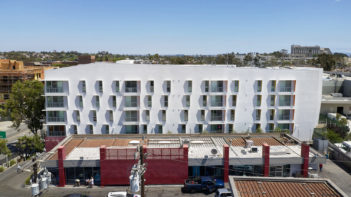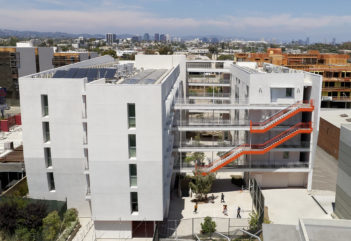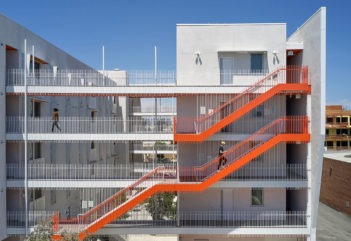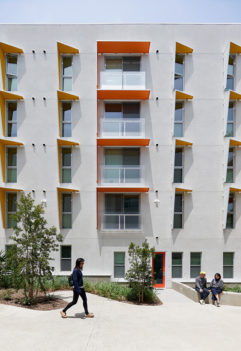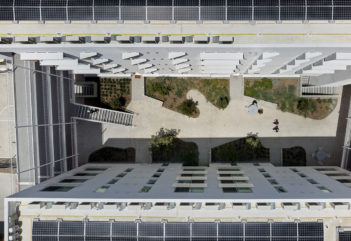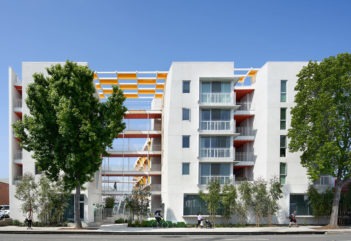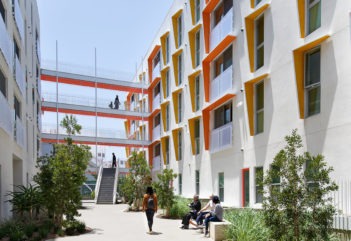2020 National Architecture Award Winners
International Architecture
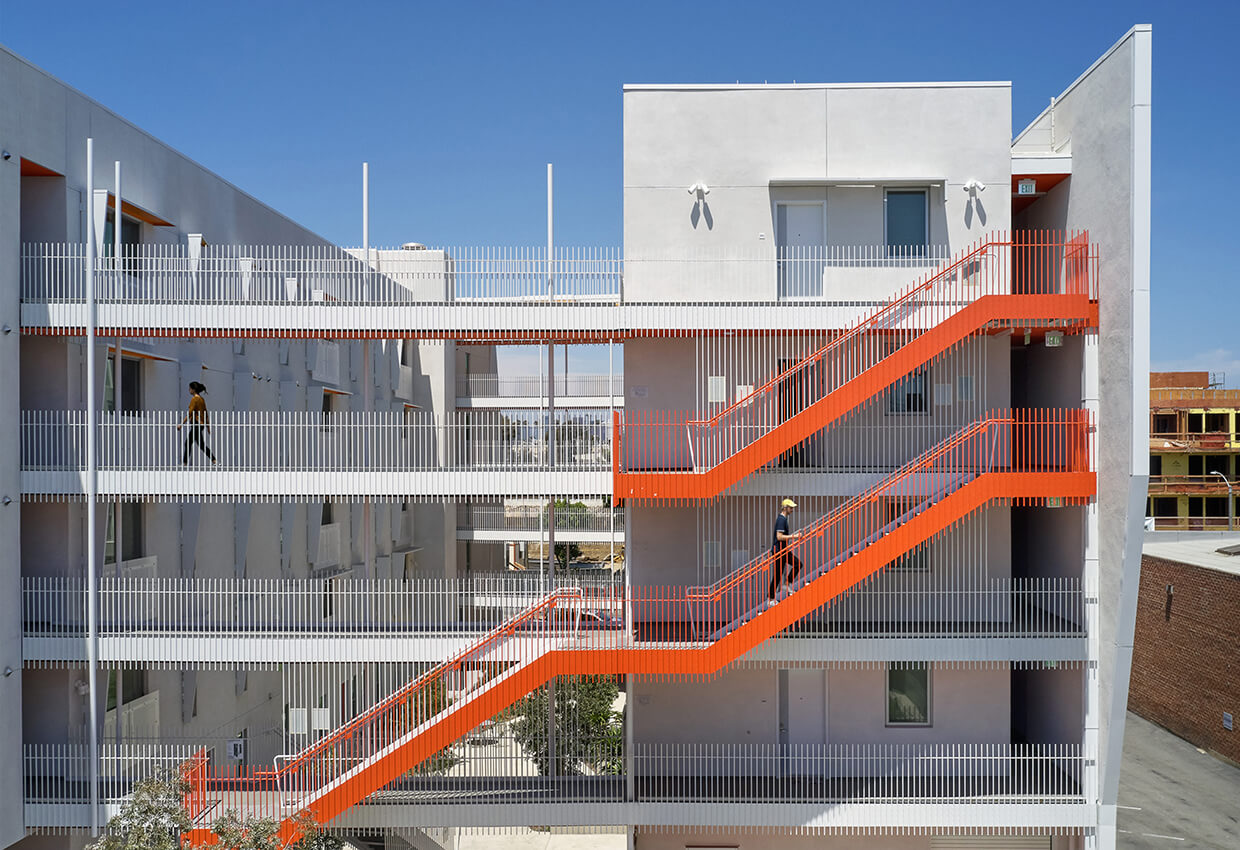
2020 National architecture awards - International Architecture
The Jørn Utzon Award
The Arroyo Affordable Housing | Koning Eizenberg Architecture | usa
Santa Monica, California,
The Arroyo is an affordable housing project in Santa Monica, California, created for low-income residents and with a particular focus on families. Koning Eizenberg has designed an exceptional project that balances efficiency with delight, supports its community, optimizes environmental performance and offers amenity to its urban context.
Two five-storey parallel blocks frame a courtyard that is conceived as a big backyard – a social hub with generous community spaces opening onto and contained within it. The courtyard is a reminder of the arroyo (from the Spanish for “creek”) that once ran through the site, and this informs its spatial and ecological qualities. Planted with undulating pockets of drought-tolerant native species, the courtyard is open-ended, tempering the urban edge and lending landscape and shelter to the street.
The Arroyo rejoices in its southern Californian climate, with open walkways and expressed corridors that enliven and connect the buildings. Strong colour is used deftly to articulate structure, soffits and sunshades from the sun-bleached primary massing. In a climate with such high contrast, the deliberate design of elements heightens shadow play and belies the simple form of the buildings. The crisp shadows made by window sunshades, offset between floors, transform flat walls and animate the facades.
In this rapidly densifying setting, the Arroyo Affordable Housing project demonstrates the formal opportunities of environmental and urban responsiveness. It affirms that affordable housing is a critical concern for architecture, and shows that within the limits of typology and budget, thoughtful design can make beautiful, amenable places, where residents can live and thrive with dignity.
Consultant/ Construction Team
- Benchmark Contractors, Builder
- Barbara Hall, Civil Consultant
- Steve Billing Landscape Architecture, Landscape Consultant
- John Labib + Associates, Structural Engineer
- Khalifeh & Associates, Mechanical, Electrical, Plumbing Engineer
- OMB Electrical Engineers, Electrical Consultant
- Green Dinosaur, Sustainability Consultant
- Promise Energy, Solar
- Finish Hardware Technology, Hardware
- AWC West, Specifications
- Veneklasen Associates, Acoustic Consultant
- Geotechnical Professionals, Inc., Geotechnical Engineering
